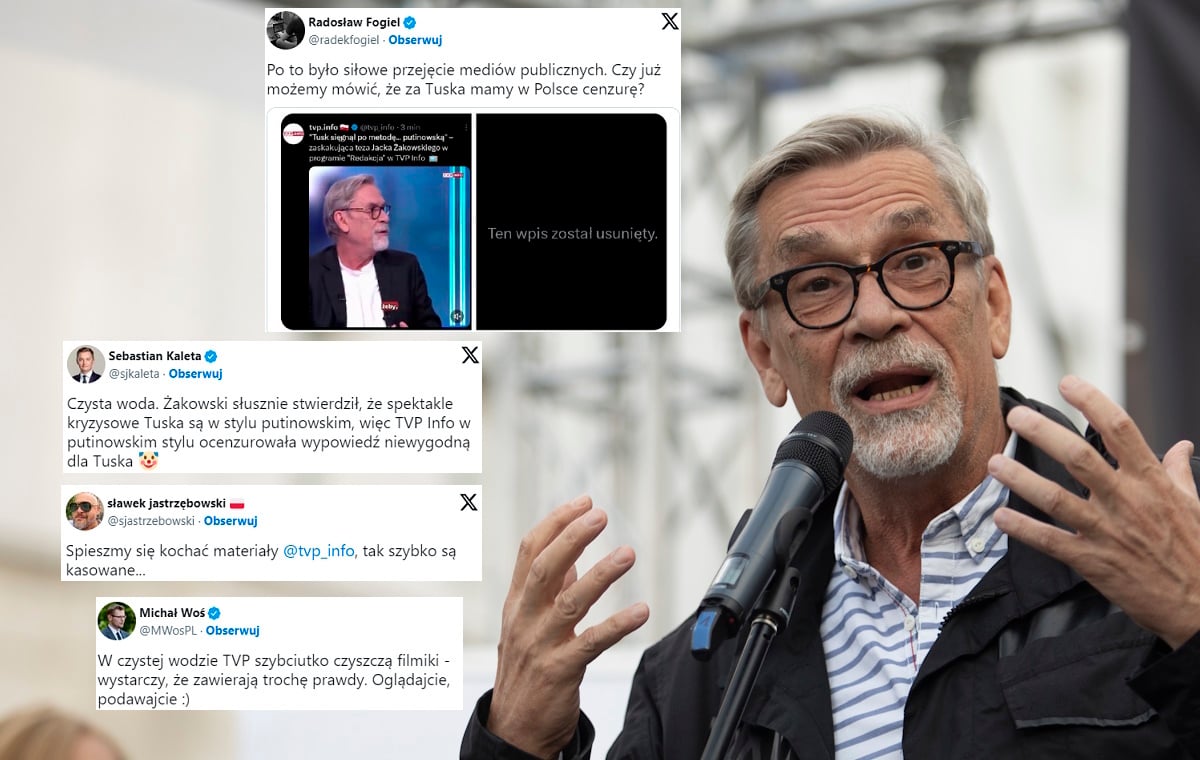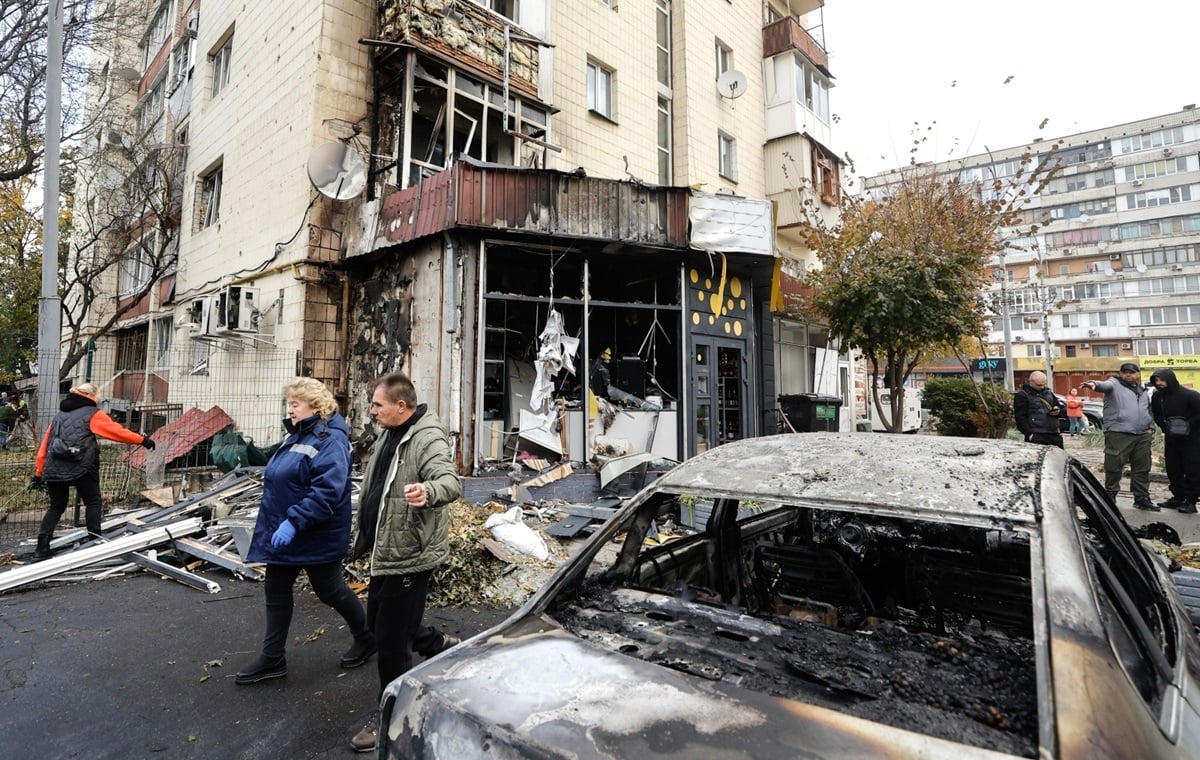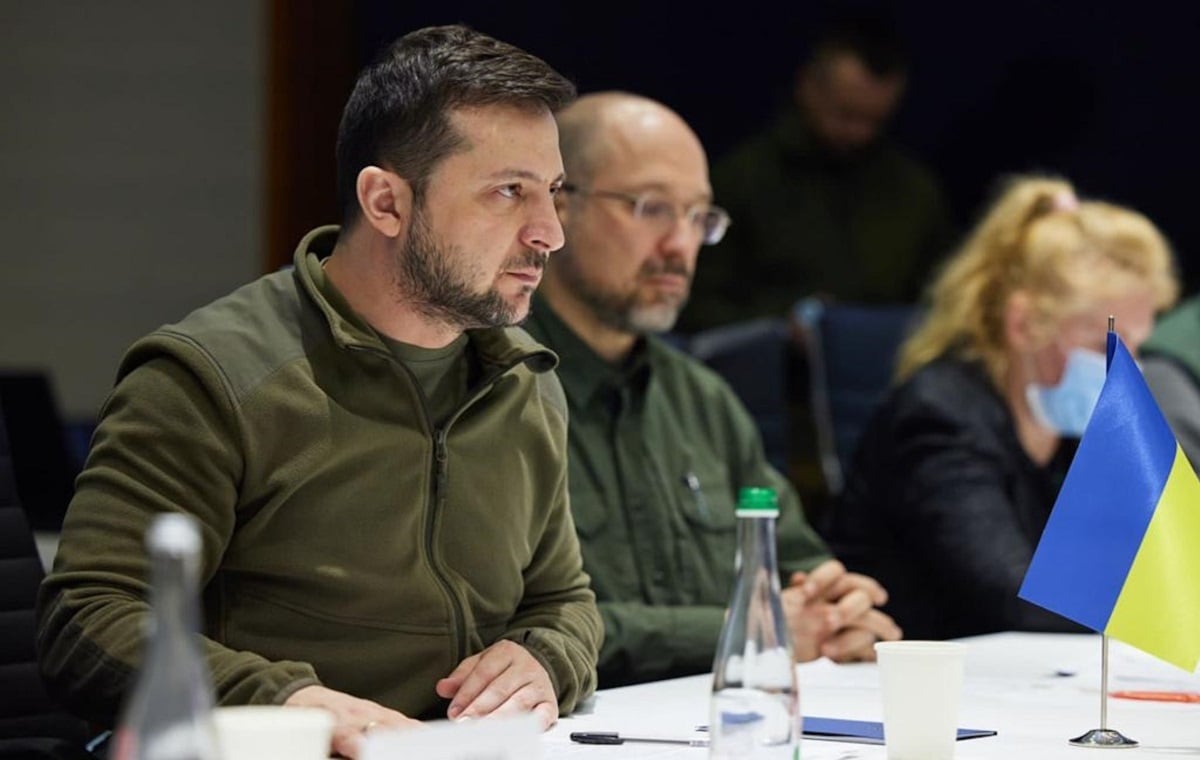A dozen meter high granite statue of a Soviet soldier is about to disappear from the Antolkol cemetery in Vilnius. The demolition decision was made by the City Council in June, after the monument was removed from the list of cultural assets. Demolition is valued at 48 thousand. euro and contractor found.
But the statues were still standing, and instead of being demolished, the city invested several hundred yards of black cloth to cover the statues. The authorities explained that in this way they wanted to protect the statue from vandalism, as there had been previous attempts to destroy it. Like in October, when someone wrote obscene words on them. – We also cover it so as not to disturb people – admits the mayor of Vilnius Remigijus Simasius in the media.
Lithuania is settling accounts with the past
Many Soviet monuments in the region have suffered a similar fate in recent months. Lithuania, like other Baltic countries, began to actively eradicate traces of its Soviet past after the Russian invasion of Ukraine. Thus, Soviet statues disappeared from Lithuanian city streets, Russian street names were changed, in September Vilnius was renamed the Lithuanian Russian Drama Theater (better known to Poles as Teatr na Pohulanka) to Vilnius Old Theatre, and the capital authorities decided to destroy the House of Moscow. Public opinion polls show that half of Lithuanians are in favour deletion Soviet monuments from public spaces, 35 percent. strong or rather against it.
Meanwhile, Lithuanian authorities said the demolition was necessary because the Soviet statues carried the same symbols as those used by Russian soldiers today who invaded Ukraine. Moreover, they painfully remind Lithuanians of the Soviet occupation.
But not like for example. Latvia, Lithuania did not destroy the monument, but removed it from public spaces. Section brought to garden Grutas near Druskininkai; Soviet statues from all over the country come here. City officials said so monument from the cemetery no one intends to destroy in Antokol either. “There was never an idea or suggestion to demolish this monument,” Tomas Gulbinas, deputy mayor of Vilnius told DW. And he assured that they would be transferred to another place. Where? “Maybe to a museum,” he said politician. In this context, there is talk of the National Museum of Lithuania.
Ministry: The UN is misinformed
However, it seems that the UN Human Rights Committee accepts this story with a different version. The organization reportedly received petitions from residents who identified themselves as “ethnic Russians” who complained about the city’s decision. Unofficially, it was said that Lithuanian pro-Russian activists were responsible for the complaint. In a letter to the UN, they allegedly accused the Lithuanian authorities of violating human rights and that they wanted to remove the statue from the grave of a Soviet soldier. In response, the Committee imposed temporary protective measures on the monument and stopped its demolition. Lithuanian authorities categorically deny the accusations.
More news on the Gazeta.pl main page
– The UN decision was based on misinformation – says the Lithuanian Ministry of Justice, which corresponds with the UN in this case.
– Information that the statues allegedly stood on the graves of fallen Soviet soldiers is not true. In fact there are no graves under the monument or even next to it, said the capital’s DW deputy mayor.
Graves are located on terraces on both sides of the monument, three thousand Soviet soldiers are buried here. Kota repeats that no one will touch their graves. Only the monument will disappear.
As DW found out unofficially, in practice the Lithuanian authorities could dismantle the monument at any time. They don’t do it out of respect for the United Nations. – The decisions of the Human Rights Committee are not legally binding for us – said a Lithuanian politician.
Grave Incident
Paweł Ławrinec, head of the Department of Russian Philology at the University of Vilnius, is of Russian descent, admits that the issue of monuments can stir up emotions. “You have to realize that every monument is a true testimony of politics. The Red Army in 1944 was indeed a liberator, but then it became an army of occupiers and for many Lithuanians this is a very painful memory. On the other hand, for many Russians, even those born in Lithuania, one of the most important events of the 20th century was World War II and the millions of victims who gave their lives in the name of victory over Nazism. This monument reminds them of that. At the monument in the Antokol, every year on May 9 a ceremony is held to celebrate the Soviet Union’s victory in World War II.
Lawrinets added that he did not understand why the UN was involved. – After all, this is an organization that in recent years has only shown its weakness and which can only “express deep concern” – he said.
Today, the wrapped and taped statues look like they are inside a blanket. At their feet someone had placed a photograph showing how they looked in all their glory before being covered. In front of the monument someone places a red carnation and lights a candle. On November 1, an incident occurred at the cemetery – a group of people took the black skirt from the statue. The video from this event circulated on the network, got into the Russian media.
The Lithuanian authorities are confident that the demolition of the Soviet monument will take place at any moment and the UN will withdraw temporary measures. “No human rights have been violated and we will prove it to the United Nations. I am sure that once we have clarified the situation, we will be able to proceed with the removal of the statues,” commented Tomas Gulbinas.
Articles come from the site Deutsche Welle

“Reader. Future teen idol. Falls down a lot. Amateur communicator. Incurable student.”


)
![Bogusław Wołoszański: “Achieving nuclear weapons would be the beginning of World War III” [WYWIAD]](https://storage.googleapis.com/bieszczady/rzeszow24/articles/image/877236c0-66fd-457a-9eb4-41792f9077ff)




